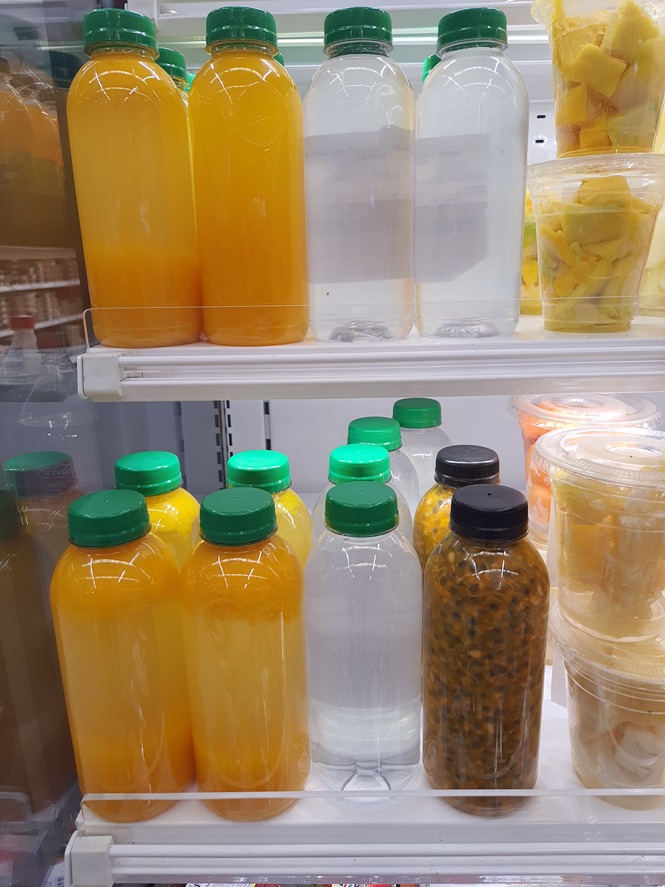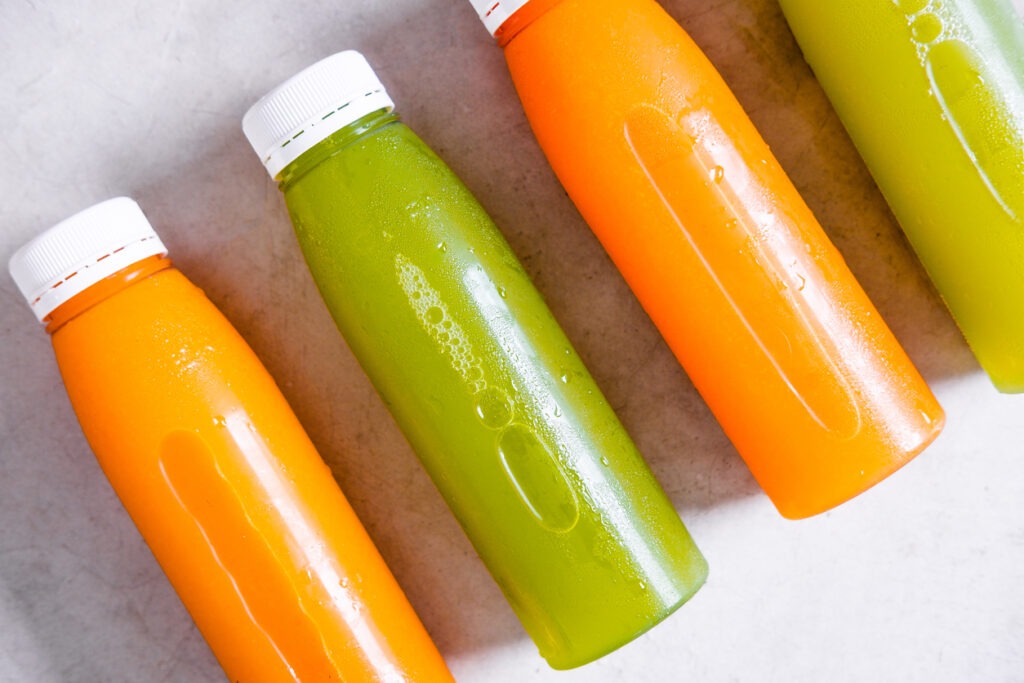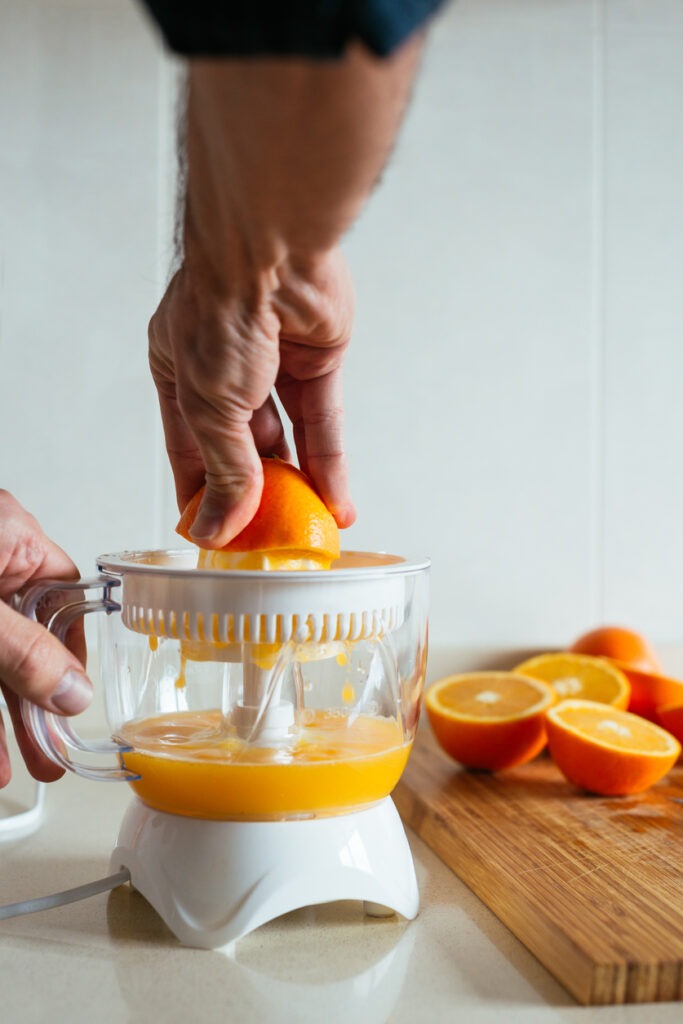Freshly squeezed juices are a fantastic way to incorporate essential nutrients into your diet. While consuming them immediately is ideal, making them ahead of time can be a convenient solution for busy lifestyles. The relevance of savoring that immediate, natural taste extends to the importance of proper storage.
Preserving the goodness of freshly squeezed juice involves shielding it from oxidation and maintaining its nutritional value. Proper storage is crucial to maintain the quality, taste, and nutritional value of your juices.
In this article, we’ll explore various methods of juicing, along with tips to store fresh juice for an extended shelf life without compromising its nutritional content.
1. Various Juicing Methods:
Before delving into storage strategies, it’s valuable to recognize different juicing methods that impact the quality of your juice:
1.1. Cold Press Juicing
One of the most popular and nutrient-preserving methods is cold press juicing. This technique involves using a hydraulic press to extract juice from fruits and vegetables. Unlike traditional centrifugal juicers that generate heat, cold press juicers operate at low temperatures, preventing oxidation and preserving vital enzymes and nutrients. When opting for cold press juicing, consider investing in a quality juicer to maximize the benefits.
1.2. Masticating Juicers
Masticating juicers are another excellent choice for juice enthusiasts. These juicers use a slower grinding and chewing motion to extract juice, minimizing heat production. This method is effective in retaining the natural flavors and nutritional content of the ingredients. Additionally, masticating juicers are versatile and can handle a wide range of fruits and vegetables, including leafy greens.
1.3. High-Speed Centrifugal Juicing
While not as nutrient-friendly as cold press or masticating methods, high-speed centrifugal juicers are popular for their speed and convenience. These juicers operate at high RPMs, quickly extracting juice from produce. However, the heat generated during the process may result in some nutrient loss. To mitigate this, consume the juice immediately or store it properly to slow down oxidation.
2. Tips to Store Fresh Juice:
2.1. Immediate Storage:
- Airtight Glass Containers: When preparing your juice for later consumption, choose airtight glass containers. This helps create a seal, minimizing exposure to oxygen and preserving freshness.
- Maximize Fill Level: To reduce oxygen exposure, fill the containers to the top. This simple practice mitigates oxidation, a process that can lead to nutrient degradation over time.
- Citrus Boost: Enhance the longevity of your juice by incorporating a piece of citrus such as lemon, lime, or grapefruit. This not only increases Vitamin C content but also introduces citric acid and antioxidants, countering nutrient loss.
2.2. Refrigeration:
- Dark and Cool Storage: Opt for a dark and cool storage space in the refrigerator. For travel, consider a cooler bag with ice packs to maintain optimal conditions and minimize nutrient loss.
- Timeframe in the Fridge: Fresh juices can be safely stored in the refrigerator for 24-48 hours, with an absolute maximum of 72 hours. Beyond this period, nutrient degradation increases, potentially altering the flavor and quality of the juice.
2.3. Freezing:
- Allow Room for Expansion: If freezing your juice, leave space at the top of the container for expansion during freezing. This precaution prevents containers from bursting.
- Thawing Process: When ready to consume frozen juice, thaw it in the refrigerator. Consuming it immediately after thawing helps maintain its nutritional integrity.
- Extended Freezing: Natural juices can be stored in the freezer for two to three months. For prolonged storage, pasteurization is recommended.
3. Understanding Nutrient Degradation:
The process of nutrient degradation, particularly oxidation, occurs when cell walls are broken down during juicing. Exposure to air, heat, and light over time contributes to nutrient degeneration. After 72 hours in the refrigerator, the juice may experience:
- High nutrient loss.
- A dull and darker appearance due to increased oxidation.
- Changes in flavor, potentially making it unpalatable.
- The risk of unhealthy bacterial growth, leading to potential stomach upset.
4. Additional tips to consider:
a. Choosing Commercial Juices:
Selecting commercial juices can be a convenient choice, and for those navigating the aisles, opting for High-Pressure Processing (HPP) juices is a wise move. These bottled juices undergo a unique pressurization process that preserves their nutritional content without subjecting them to heat, ensuring a prolonged shelf life while maintaining essential nutrients. Moving from the store shelf to your kitchen, the importance of proper storage cannot be overstated.
b. Avoid Prolonged Exposure to Light:
Prolonged exposure to light can compromise the quality of fresh juice over time. To safeguard the integrity of the juice, it is advisable to store it in opaque containers or dark bottles, particularly crucial for juices abundant in vitamins and antioxidants, as these compounds are highly sensitive to light. While mastering the art of storage is vital, the journey doesn’t end there. Even with optimal storage conditions, the clock is ticking.
c. Consume Promptly
To savor the best taste and extract maximum nutritional benefits, prompt consumption is key. Aim to indulge in your freshly squeezed elixir within 24 to 48 hours of preparation, ensuring a delightful and nutrient-rich experience. In this way, the careful selection, storage, and timely consumption of juices weave together a tapestry of health and flavor.
Conclusion
In conclusion, whether you’re an avid juicer or incorporating fresh juices into a busy lifestyle, the proper storage of these nutrient-packed beverages is paramount. By considering various juicing methods and implementing the provided storage tips, you can guarantee that your freshly squeezed juices remain both delicious and nutritious over time. Whether you prefer the nutrient-preserving cold press method, the versatile masticating juicer, or the quick and convenient centrifugal approach, proper storage is key to maintaining the quality and taste of your juices. From choosing the right container to employing freezing and HPP methods, these strategies ensure that every sip of your fresh juice is a delightful and nutritious experience. So, embark on your juicing journey armed with knowledge, and savor the goodness of freshly squeezed juices every day.




